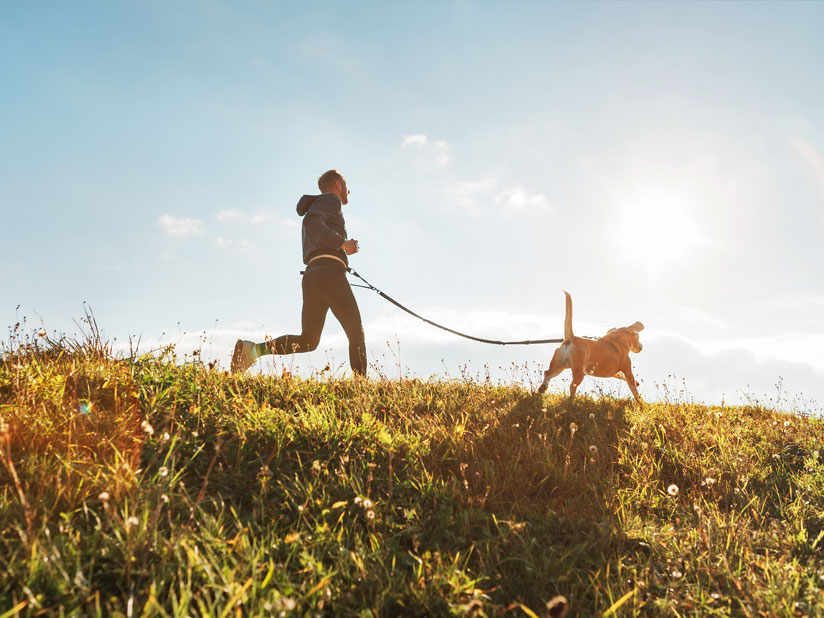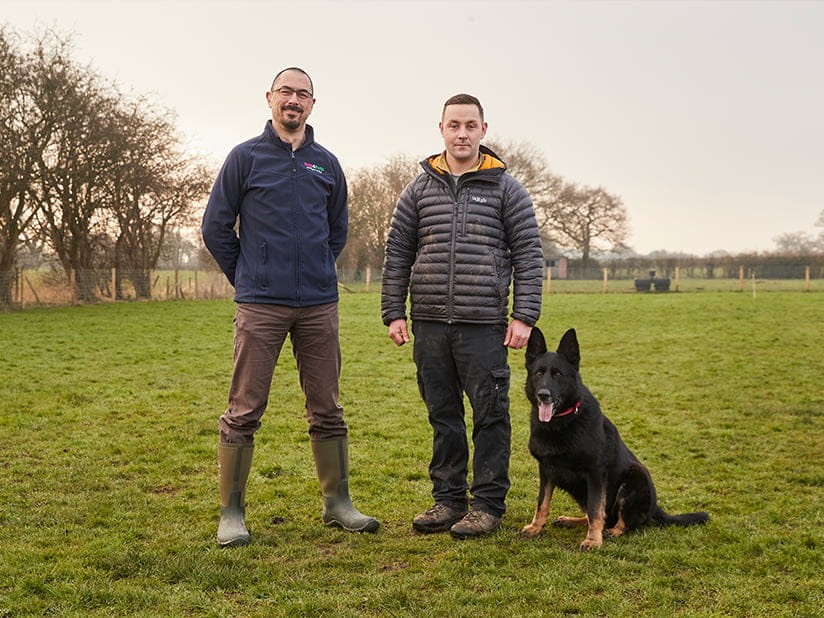
Getting into lead training
If your dog pulls on the lead, it can make walkies stressful and strenuous. Fortunately, there are a few simple steps you can take to stop your pup pulling. We cover them all in this guide.
Read more
It’s a sad fact that some of the worst behaviour seen in dogs is down to their owners not training them correctly. After all, having the time, money and space to own a dog doesn’t automatically mean that you’ll be ready to teach them, too.
So, before we go any further, it’s crucial to get into the mindset that you are the key to your dog’s behaviour. It’s going to take commitment and learning. But, trust us: it’ll be worth it.
By dedicating yourself to a training regime with your dog, you’ll discover new ways to enjoy pet ownership and a stronger bond with your faithful friend.
One of the most important things when it comes to dog training is consistency. All too often, owners will give mixed signals to their pet, which makes learning and behaviour improvement difficult.
Take jumping up on the sofa, for example. When there are guests around, many owners will tell their dogs off for climbing onto the furniture.
However, if they’re alone with their pet, they’ll then let the dog lie on the sofa with them. How does the poor pooch know what’s right or wrong?
Whatever style of training you undertake with your dog, it’s crucial that you maintain consistency.

There’s a common misconception that only puppies are receptive to training. Well, we’ve got news for you: grown-up dogs make great students, too!
Sure, it might take a little longer to iron out long-term unwanted behaviour with an older dog. But, with the right training and a committed teacher, furry friends of all ages can be trained. And, as a bonus, the effort taken up by training will distract them from naughty stuff such as chewing furniture and pinching food.
There are loads of different training methods, but here we’ll focus on two: traditional and modern.
Traditional training methods work by discouraging unwanted behaviour and correcting the dog when they get it wrong.
Modern training relies on making it easy for your dog to get it 'right' and then timing rewards accurately to highlight and encourage the behaviour we want.
Rewards are a perfect way to show your dog that they’ve done something right. It could be a tasty treat or playtime with a favourite toy—the important thing is that it’s something that makes your mutt happy!
Some dogs get bored sooner than others, so try to vary the rewards and keep the most valuable ones for the best efforts your dog offers.
Finally, remember that the closer in time two events happen, the stronger the association your dog will make between them. Ideally, try to give your verbal, food or toy reward within half a second of seeing the correct behaviour for the best results! A clicker can be especially helpful here because you can 'click' the instant you see the behaviour you want.
In dog training, using punishment to make a dog less likely to repeat a behaviour, means either to withhold a reward (this is called negative punishment), or to carry out an unpleasant action, such as a tug on the lead (this is called positive punishment).
In modern training there is rarely, if ever, any call to use positive punishment.

If your dog pulls on the lead, it can make walkies stressful and strenuous. Fortunately, there are a few simple steps you can take to stop your pup pulling. We cover them all in this guide.
Read more
If you’re going to take training seriously, getting your dog to respond to instructions like ‘sit’, ‘stay’ and ‘come’ is vital. The good news is that learning is also great fun! Check out our guide here.
Read more